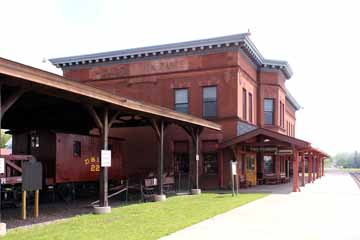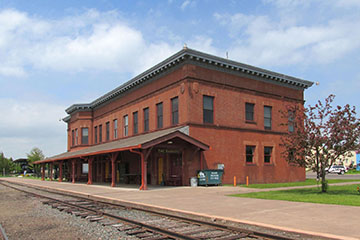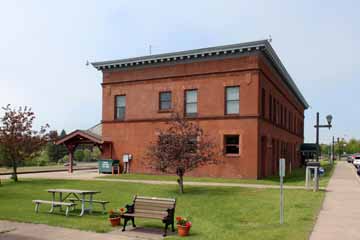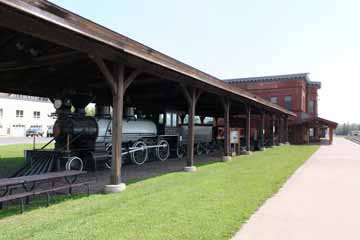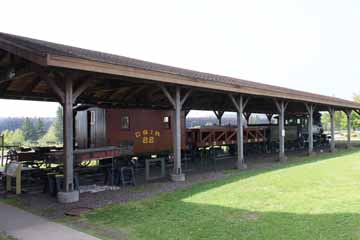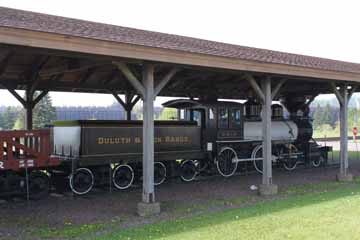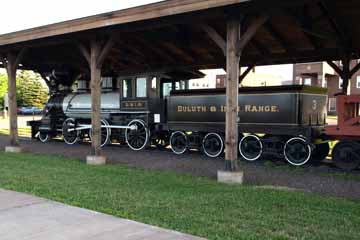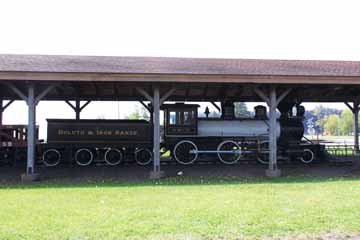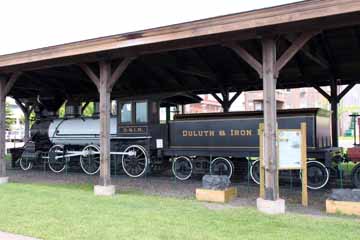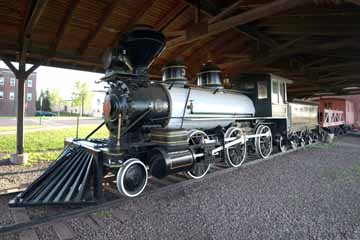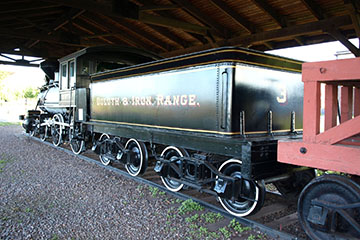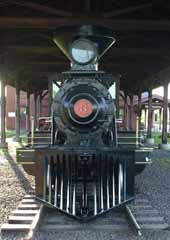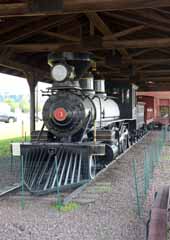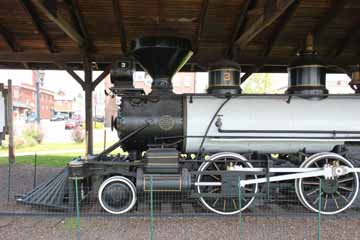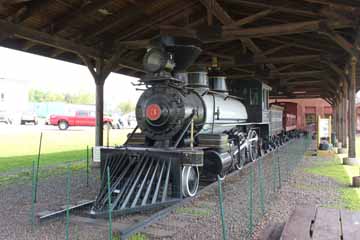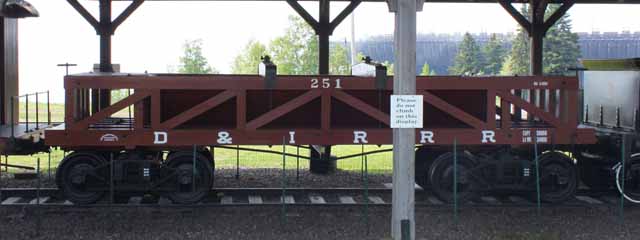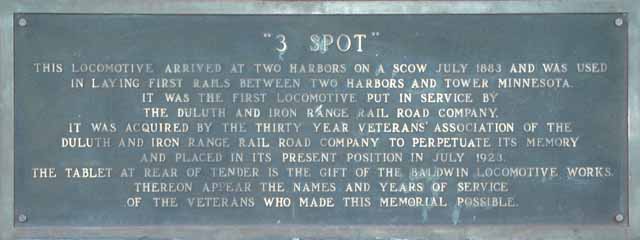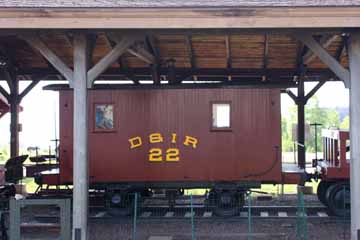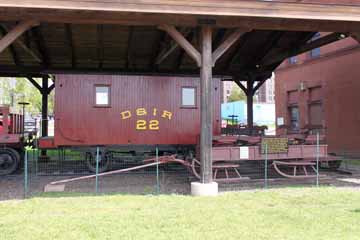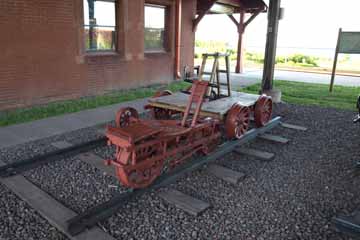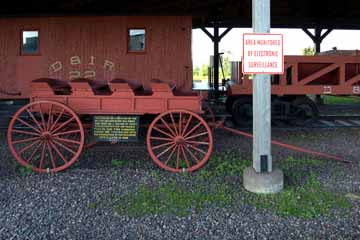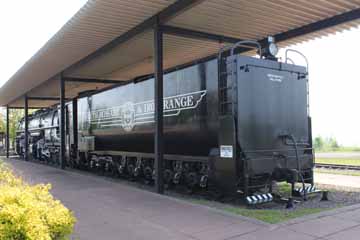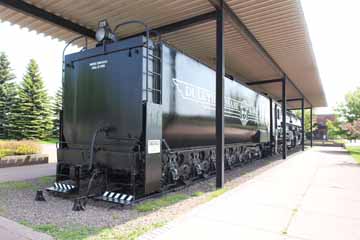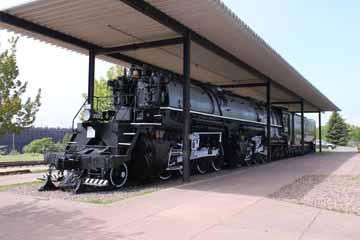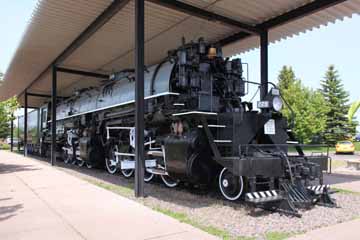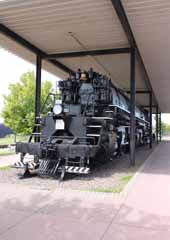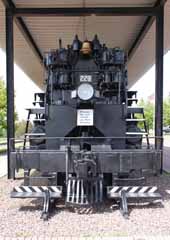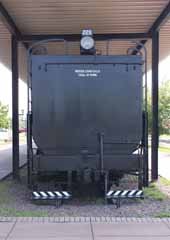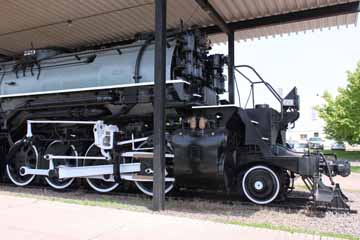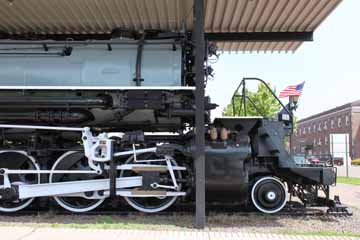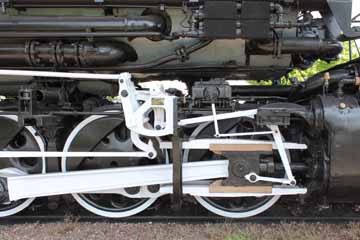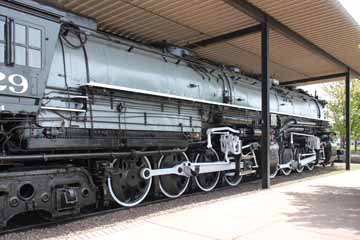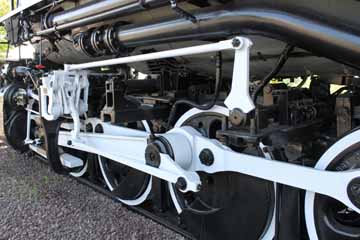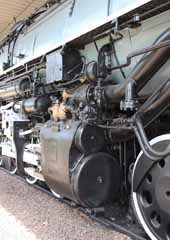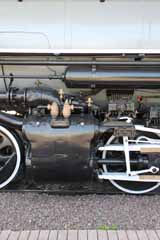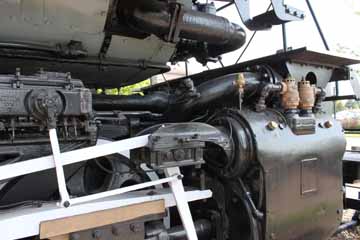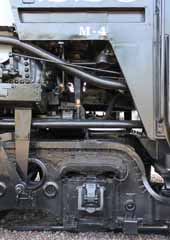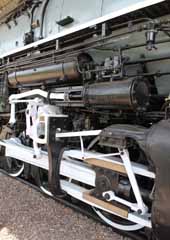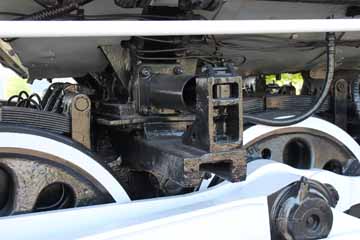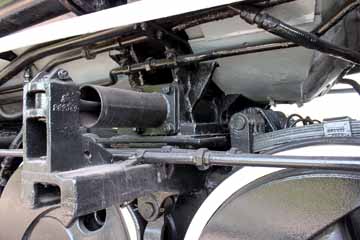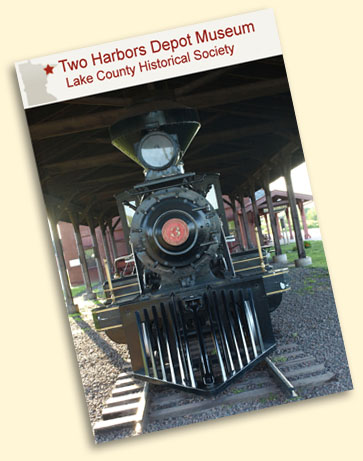

The Two Harbors Depot Museum, housed in the former Duluth & Iron Range Railroad Depot in Two Harbors, MN, is on 6th Street near the Lake Superior waterfront. It features exhibits reflecting the development of the Lake County area, with special emphasis on the three main local industries: iron mining and associated railroading, timber extraction and milling, and commercial fishing.
There are two historic locomotives on outdoor display, and the building is also home to the Lake County Historical Society's administrative offices and archive storage, as well as a small gift shop. I've visited several times and the photos on this page are from various dates.

The line was completed in 1884 and on 31st July that year, the first iron ore shipment arrived from Soudan. By 1886 the D&IR had connected Two Harbors with Duluth and was running passenger services north to Ely, MN.
The railroad was bought by Illinois Steel in 1887. In 1901, it then became part of the United States Steel Corporation, which simultaneously took over the Duluth, Missabe & Northern. The two railroads operated as a single system but were not formally merged until formation of the Duluth Missabe & Iron Range in 1938.
The Two Harbors depot is a two storey, 110' x 44' brick building erected in 1907 as headquarters and corporate offices for the Duluth & Iron Range Railroad.
The D&IR was incorporated in 1874 by a Michigan syndicate but, by 1882, when it was acquired by Charlemagne Tower of Philadelphia, it had not
laid any track. Tower needed a means of transporting ore from his Vermillion Iron Range mines to Lake Superior and, the following year, construction started on the line from Soudan to Two Harbors.
In 1953, steam hauled passenger trains were replaced by a single diesel Budd Car until, in 1961, all passenger services ceased between Duluth and Two Harbors.
The depot was then donated to Lake County, and was listed on the National Register of Historic Places in 1983. During the 1980s, freight service also ceased on the line, which was acquired in 1989 by the St. Louis and Lake Counties Regional Railroad Authority. It now serves excursions operated by the North Shore Scenic Railroad out of Duuth.

#3 was the only wood burning locomotive ever to operate on the D&IR although, for the kind of
work it was initally engaged in, that was no bad thing. It could take fuel from the plentiful
adjacent forests, and water from the many local rivers and streams as it hauled rails, supplies
and equipment from Agate Bay up to the rail
head.
The locomotive weighs 75,000 lbs, 64,000 lbs on its 52" drivers. With 16" x 24" cylinders, it operated at a boiler pressure of 150 psi delivering 15,075 lbs tractive effort.
On display outside the depot is the first locomotive in service on the D&IR. #3, also known as "3 Spot", is a Mogul type (2-6-0) locomotive built by the Baldwin Locomotive Works in 1883 for Tehuantapec Interocean Railway at a cost of $12,000, but was refused for technical reasons. In need of a locomotive to help lay rails from Two Harbors, the D&IR purchased it for $9,750.
"3 Spot" steamed to Duluth under its own power and was then lashed to a barge for what turned out to a very rough trip to Two Harbors (then known as Agate Bay).
As heavier locomotives joined the D&IR, #3 became less and less useful. No longer required, in 1899 it was sold to the Duluth & Northern Minnesota, another ore carrier operating out of the Mesabi Range to docks at Duluth and Superior, WI, and was renumbered #2.
In 1923, "3 Spot" was purchased by the Thirty Years Veteran's Association of the Duluth & Iron Range Rail Road Company, restored to its
original appearance and placed on display at the depot as part of D&IR's 40th anniversary celebrations.
Left top photo, #3 is coupled to a wooden ore car which was delivered by barge in 1884. It has
been given the number of the D&IR's very first
ore car, #251, and bears a plaque on the left
side listing the veterans who made #3's purchase possible. The plaque was donated by Baldwin in 1923. The left bottom photo shows the second plaque affixed to #251, which gives information on "3 Spot".
Top right, DIR G Class Caboose #22 was built by the Duluth Manfacturing Company in 1893 as four wheel caboose #52. It was rebuilt as an eight wheel caboose in 1909 and retired in 1932. It was returned to its original four wheel configuration for display at the museum in 1934.
Middle right, in front of #22 is a sleigh used to transport D&IR employees between Two Harbors and Duluth during winter from 1882 to 1886, before the railway finally connected the two towns. On the other side of the caboose (lower right), a buggy used as transport between Two Harbors and Duluth from 1883 to 1886.
Below, behind #22, a small, hand operated velocipede is on display.

The DM&IR took delivery of its first Class M3 Yellowstone type (2-8-8-4) locomotives from the Baldwin Locomotive Works in Philadelphia, PA, in 1941 (#220-#227).
The design was based on the Western Pacific
M-137 class 2-8-8-2 (#251-#260) also built by Baldwin in 1931, but included lengthening the back engine frame and fitting a larger, vestibuled cab to protect crews against the harsh northern cold. This increased the engine's weight and required a four-wheel trailing truck in place of the M-137's two-wheel truck.
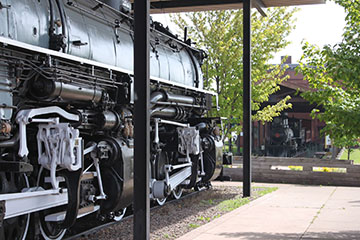
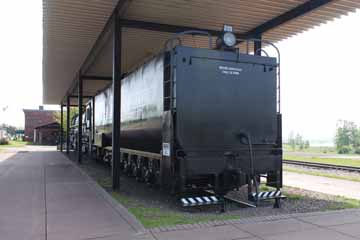
You can see the two surviving M3s on the Lake Superior Railroad Museum page of this website and the DMIR #225 page.
The M3 was considered a success by the DM&IR, but their arrival coincided with growing industrialisation associated with WWII, prompting the company to order more road power. A second order for ten more Yellowstones from Baldwin followed in 1943 (#228-#237). Although identical in design to the M3s, the new, M4 Class were 4,700 lbs heavier because carbon steel was used in place of alloys as a result of war restrictions.
The M4s were completed late in 1943 after the DM&IR's ore traffic had subsided, so some were initially leased to the Denver & Rio Grande Western in the Winter season when much of the DM&IR system was inoperable because of ice and heavy snow.
The M4 weighs 699,700 lbs. The overall wheelbase is 113' 6", engine wheelbase 67' 2" and each driver wheelbase 17' 3". It has Baker valve gear, 63" drivers and 26" x 32" cylinders. The tender weighs 438,000 lbs light and has a 25,000 gallon water and 26 ton coal capacity.
The grate is 125 sq ft and the firebox 750 sq ft.
The total heating surface of 9,552 sq ft included 194 sq ft in three thermic syphons, 177 sq ft in
the combustion chamber, 32 sq ft of arch tubes
and 2,770 sq ft superheating provided by a Type E superheater with two hundred and forty-five
21' long 3¾" flues. Operating at a boiler
pressure of 240 psi, it delivered 140,093 lbs tractive effort.
The first five M-4s delivered were equipped with Worthington feedwater heaters, the last five with Elescos.
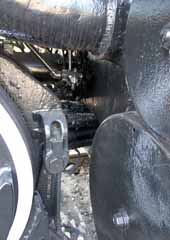
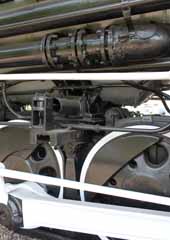
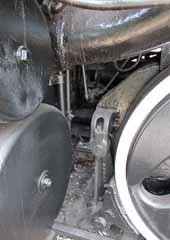
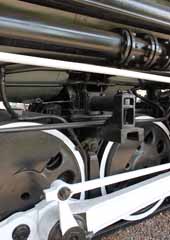
The M4 is an articulated locomotive. The rear engine frame supports the cab, firebox and boiler. The front engine frame is connected by a pivot to the rear fixed frame allowing it to swivel when the taking curves. Above, two views past the middle cylinders to the connection.
Above right and far right, the bolster fitted
beneath the front end of the boiler does not provide any support on the front engine frame for the boiler’s weight. As the locomotive takes curves, the bolster slides over the plate fixed to the front frame.





